As an Indonesian, Nasi Goreng is one of those quick and easy meals everyone seem to know how to make, but no one can decide how it should taste. This recipe combines my mom’s and my take on the dish because even people in the same household have differing ideas of how Nasi Goreng should taste.
I love cooking Nasi Goreng because it’s budget-friendly, and the ingredients needed to make it are fairly flexible (except for Kecap Manis, but more on this later). If you’re sick of your usual egg-fried rice, give this recipe a whirl and let me know what you think!

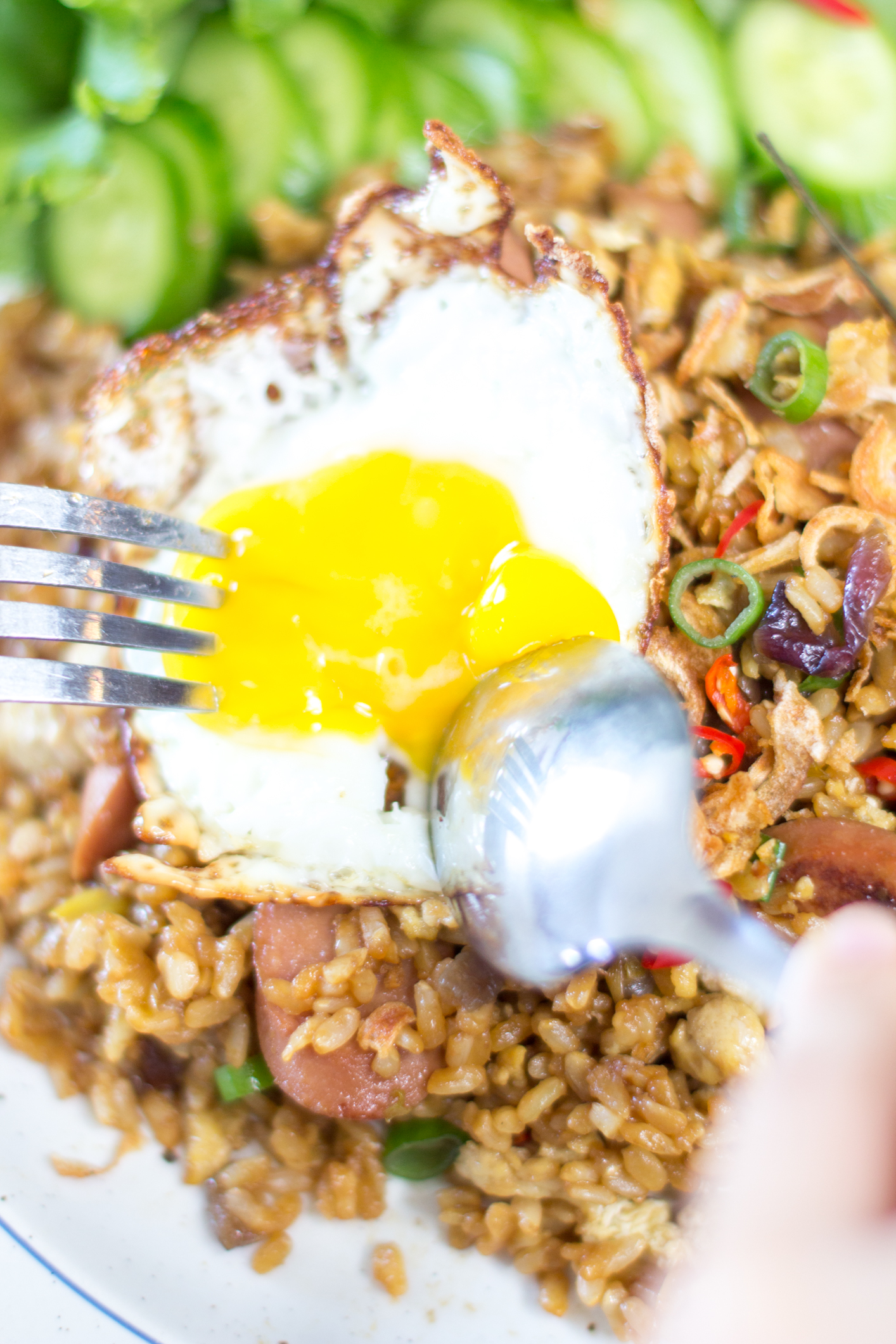
Origin Story of Nasi Goreng
Nasi Goreng translates to “fried rice” in Bahasa Indonesia and Malay. Every country has its version of fried rice, but this is the version that you’ll find in many restaurants and vendors along the streets of Indonesia. The origins of Nasi Goreng in Indonesia are unclear. Its thought to have been introduced by early Chinese immigrants that needed to find a way to use leftover rice before it turns bad (before refrigeration). Despite the dish’s Chinese origins, Nasi Goreng’s flavors are distinctively Indonesian, bursting with spicy sweet-savory in every bite. Over the years, it’s become the country’s national dish and is loved by many worldwide!
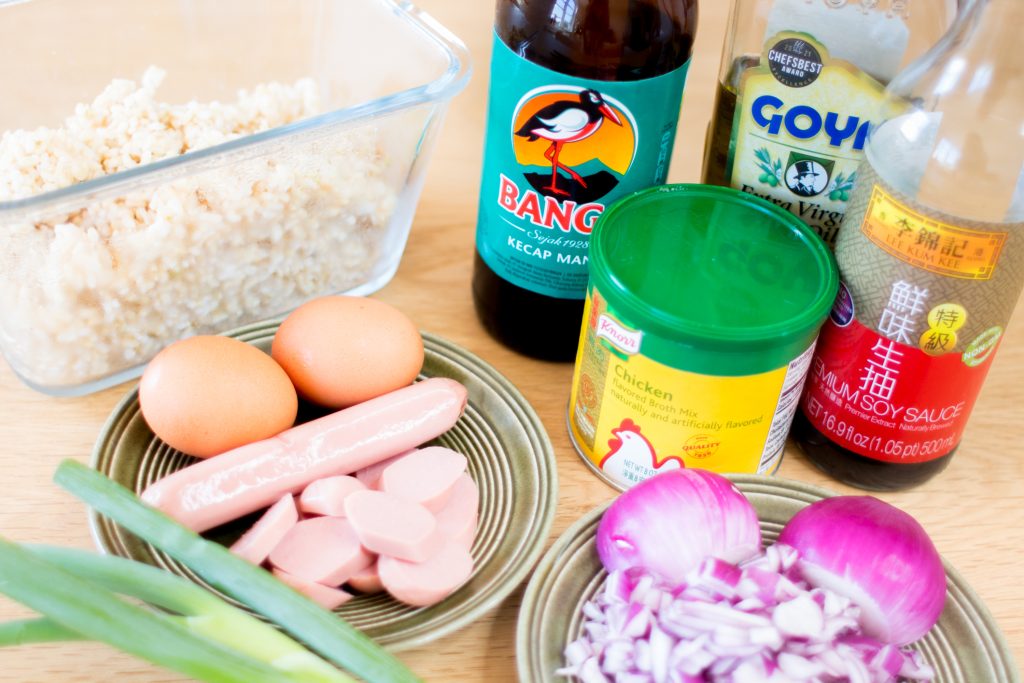
Nasi Goreng? How Do I Pronounce That?
Naa-See-Goh-Reng. If you can’t figure it out, there are loads of audio clips on Google with the proper pronunciation. But hey, even if you can’t pronounce it, that shouldn’t stop you from trying this fantastic recipe.
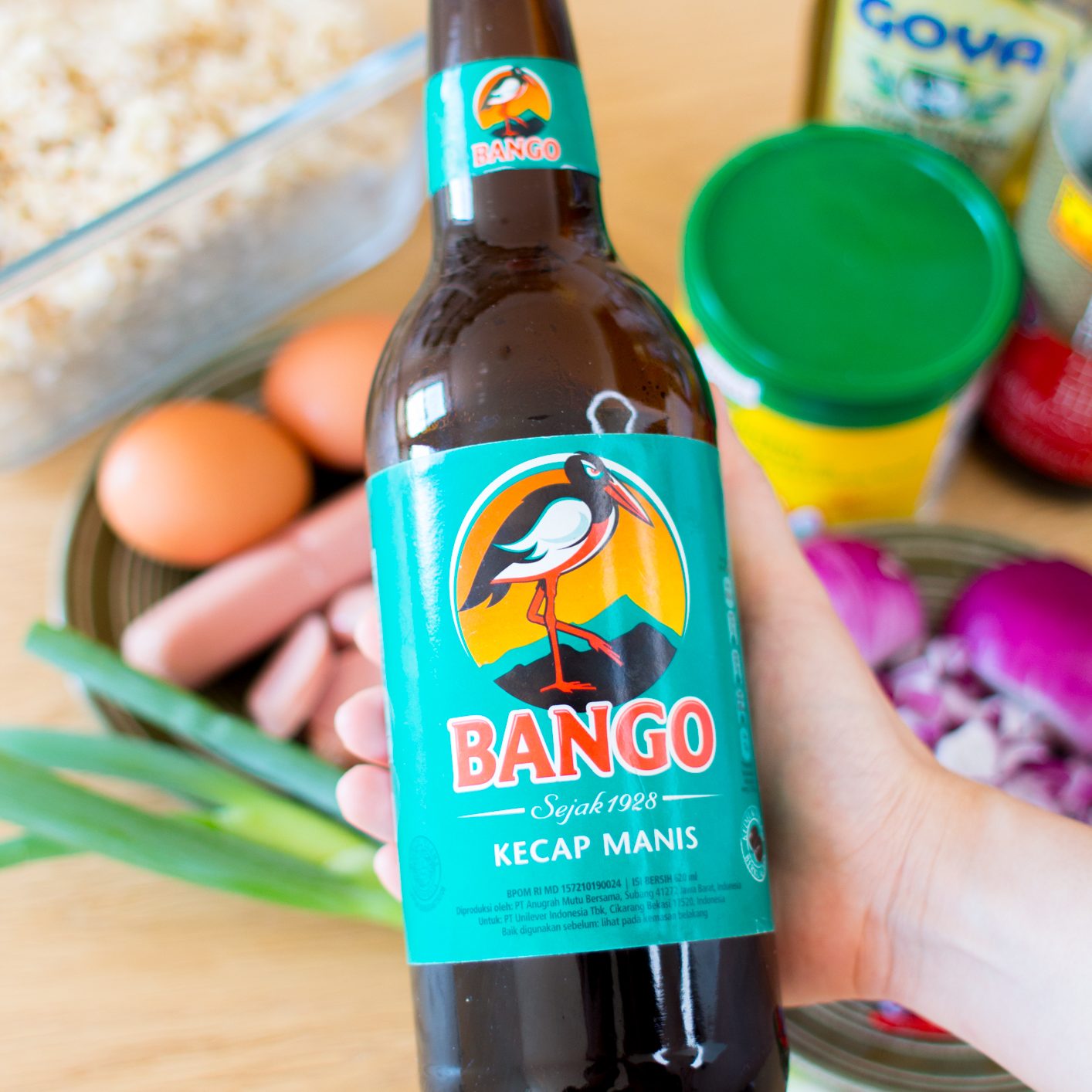
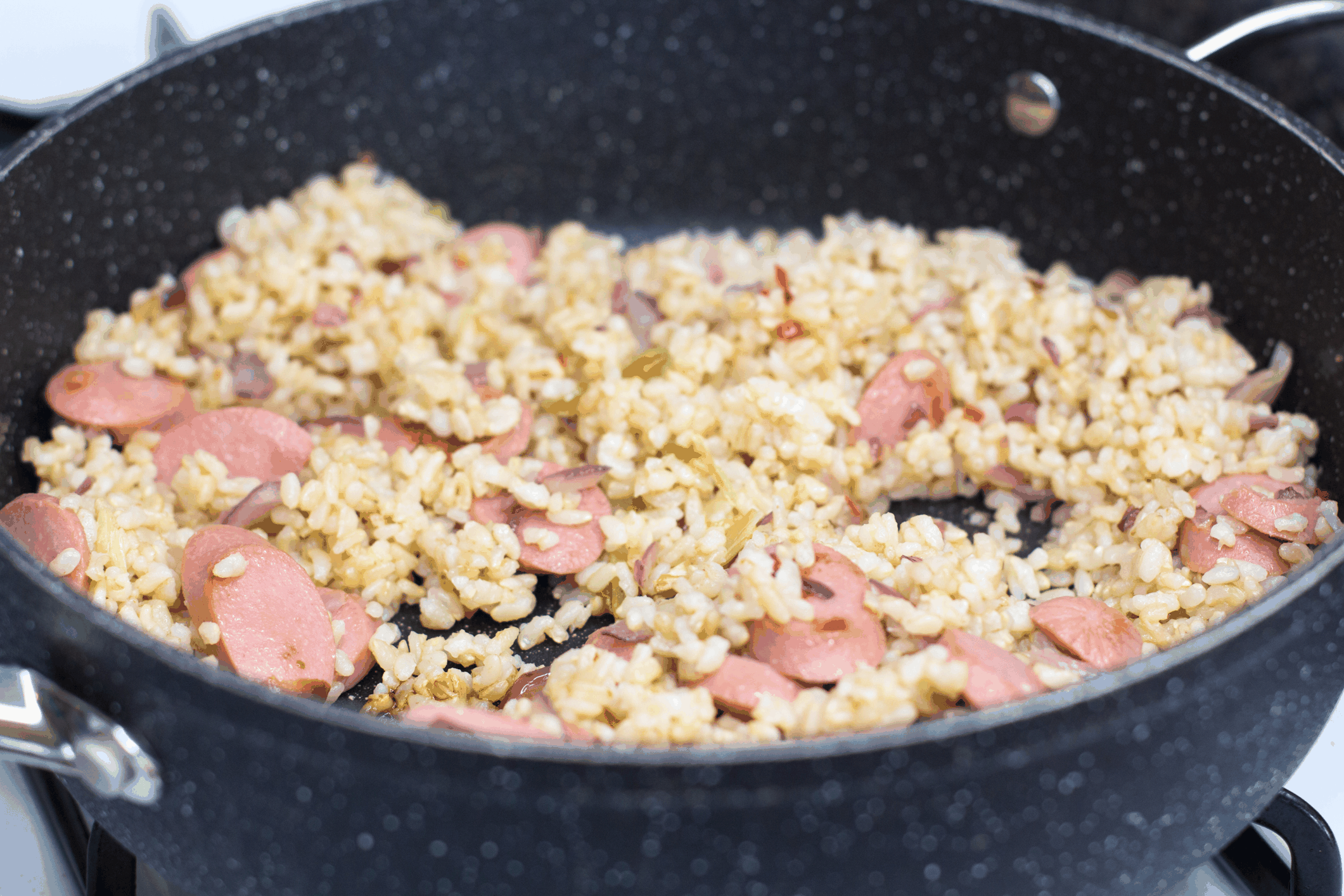
Kecap Manis (Indonesian Sweet Sauce)
Kecap Manis is the key ingredient that makes this Nasi Goreng recipe uniquely Indonesian. Originating from Indonesia, Kecap Manis (Keh-chup-mah-nis) is a dark thick sweet soy sauce made from fermented black soybeans and up to 50% palm sugar (gula Jawa). I think it’s safe to assume that 99.99% of Indonesian households have this condiment in the pantry at any time. We use it for both cooking and as a dipping sauce. I’m also not exaggerating when I say that we pour it on EVERYTHING (including, but not limited to, fried eggs, tofu, fish, chicken, etc.)
Kecap Manis can also be found easily in many Asian grocery stores across the US. I highly recommend the “Bango” brand (as shown in the photo), but the “ABC” brand should work well too!
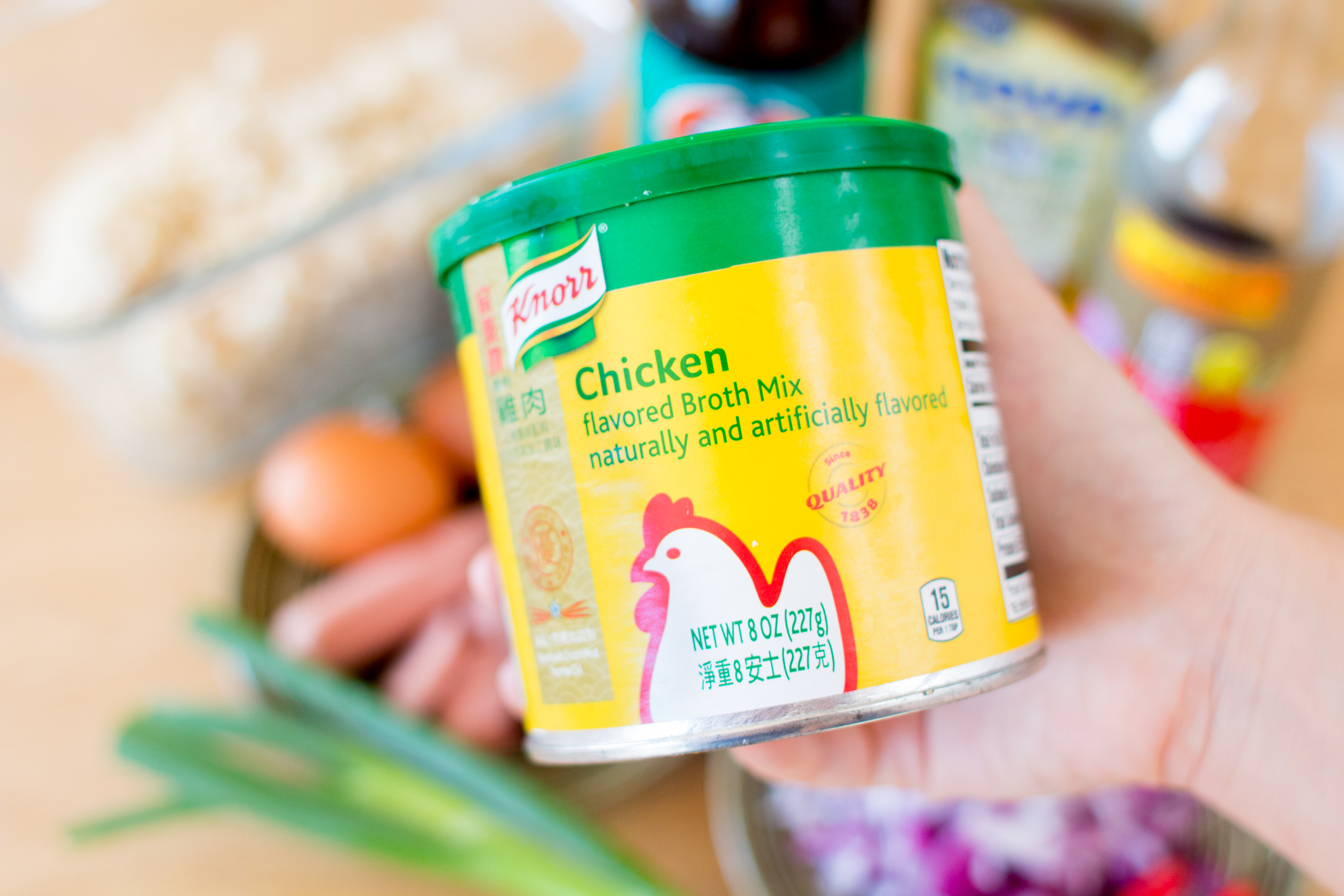
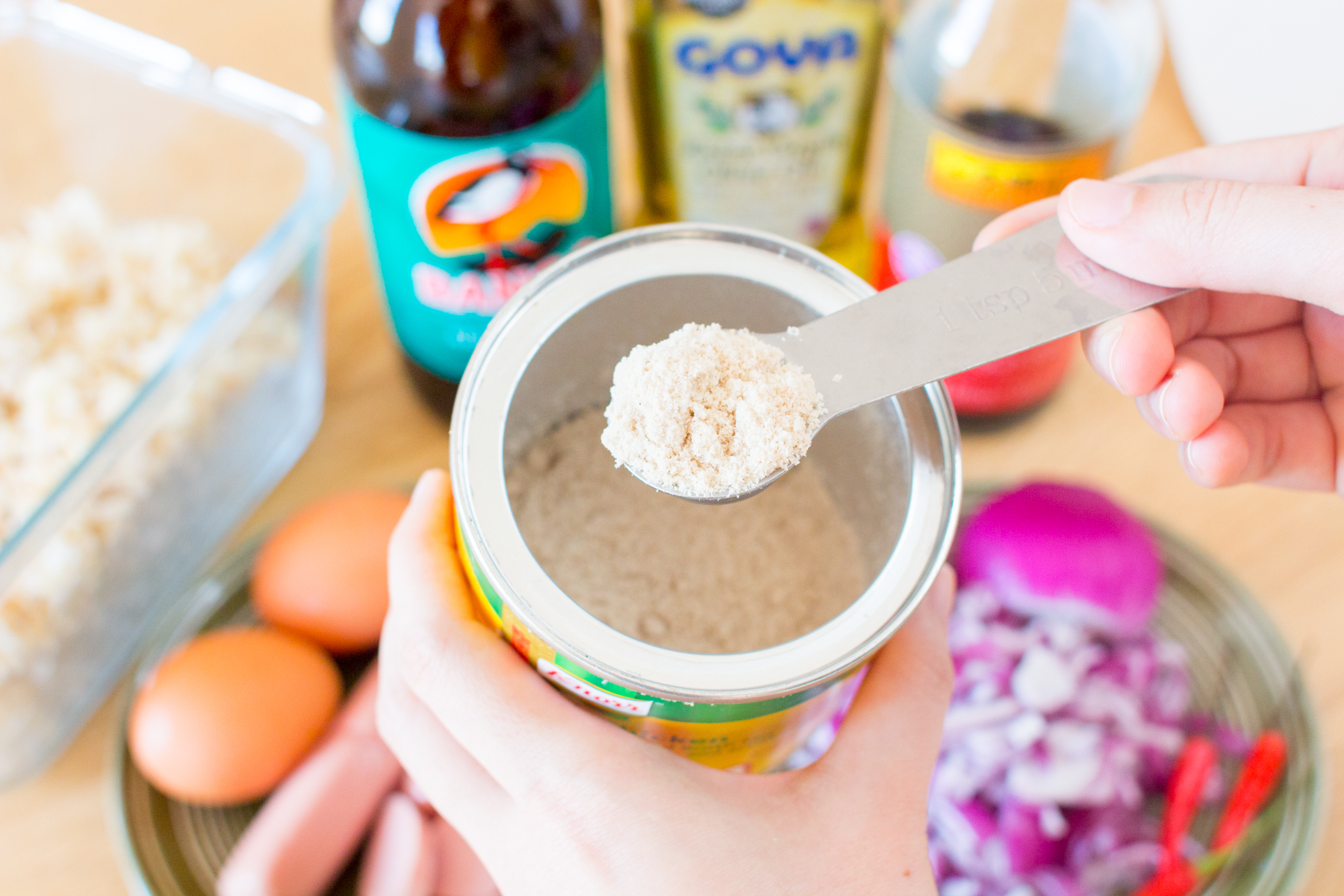
Chicken Powder Should Be Added to Soups, not Fried Rice
Today might be when you’ll start adding chicken powder to all your fried rice. On the streets of Indonesia, chicken powder is commonly used as seasoning for most dishes. It enhances flavor by adding umami-goodness to anything and everything.
If you’re vegetarian or vegan, substitute chicken powder with nutritional yeast flakes. These flakes are often used as a vegan cheese substitute and will do an excellent job of adding flavor to this recipe.
Is Loose Chicken Powder Different from Cubed Ones?
They’re not different, but the cubed ones are heavily compressed, making it difficult to break apart and mix into the rice well. If you only have cubed chicken powder on hand, I suggest dissolving half a cube in 1 tbsp of warm water before adding it to the fried rice.
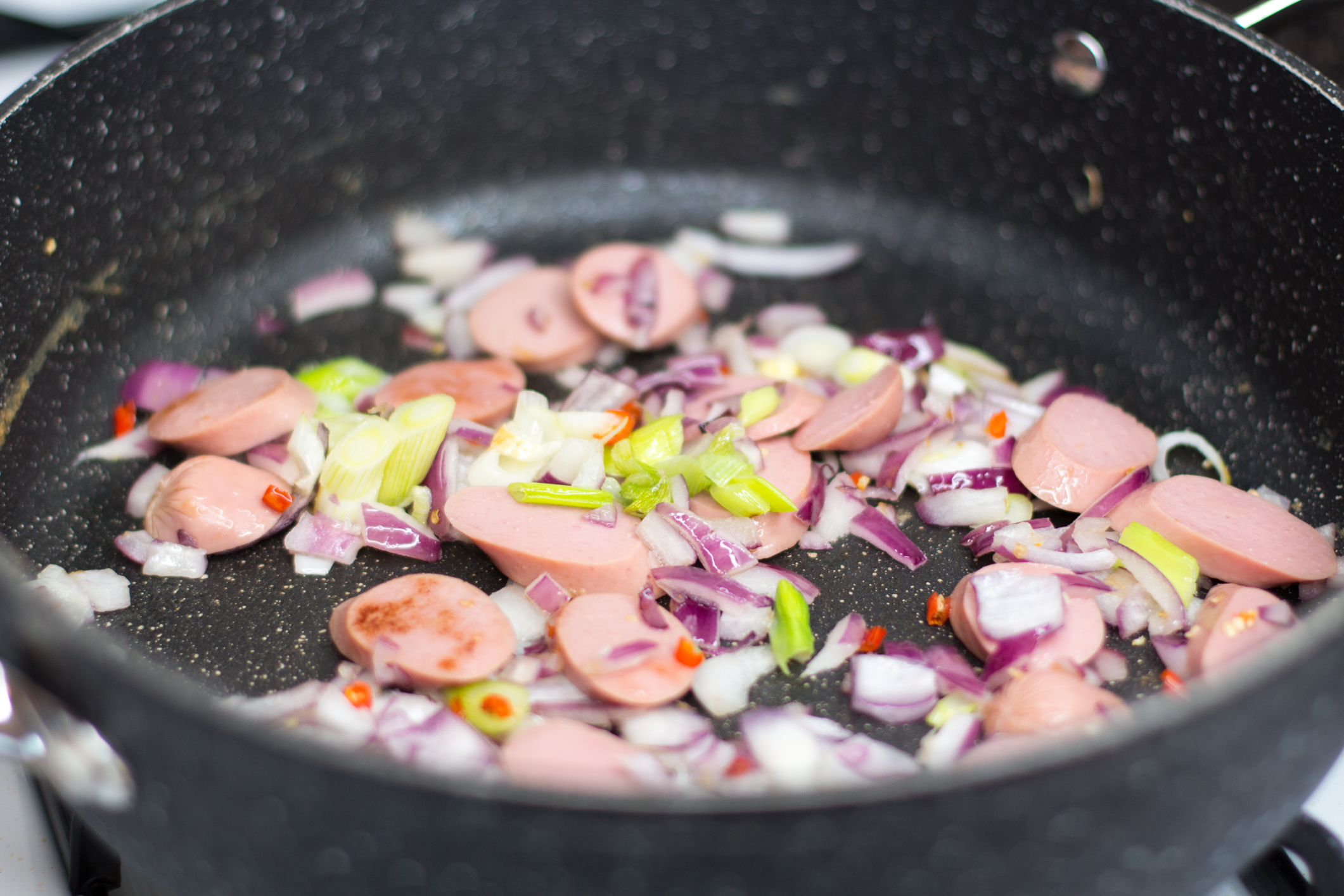
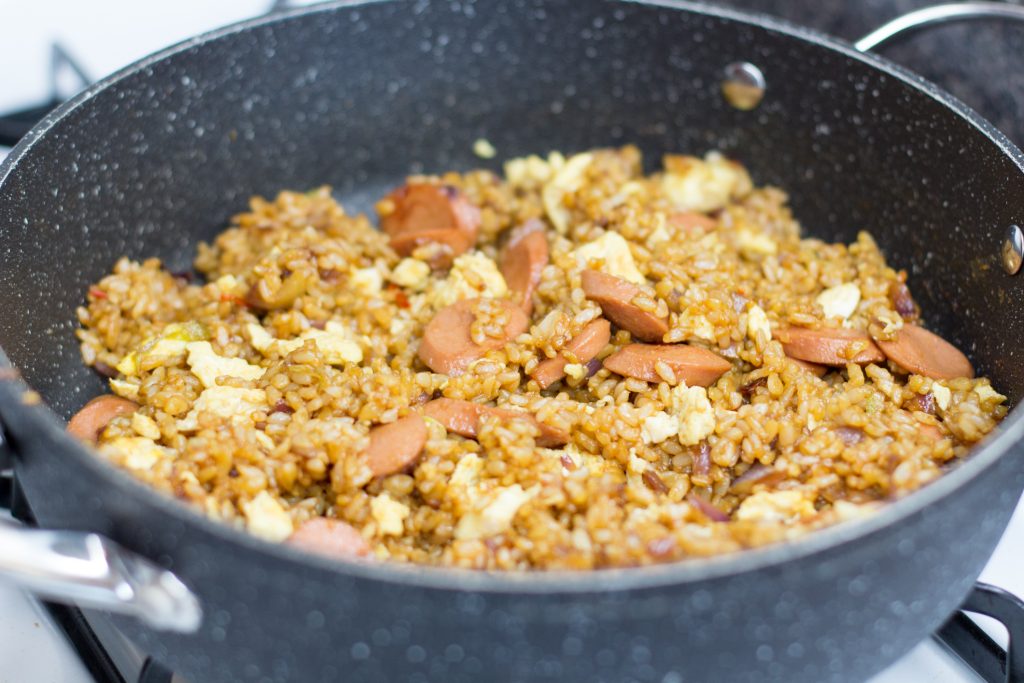
Is Stir-Frying Rice for 10 minutes Necessary?
YES, YES, YES, but only if you’re serious about your fried rice. The key to good fried rice is to stir-fry it long enough so that the clumpy overnight rice breaks apart and each rice grain is fried. It also takes time for the garlic and onion flavors to infuse into the fried rice. Even though it may seem unnecessary, the extra 5-10minutes will take your fried rice game to the next level.

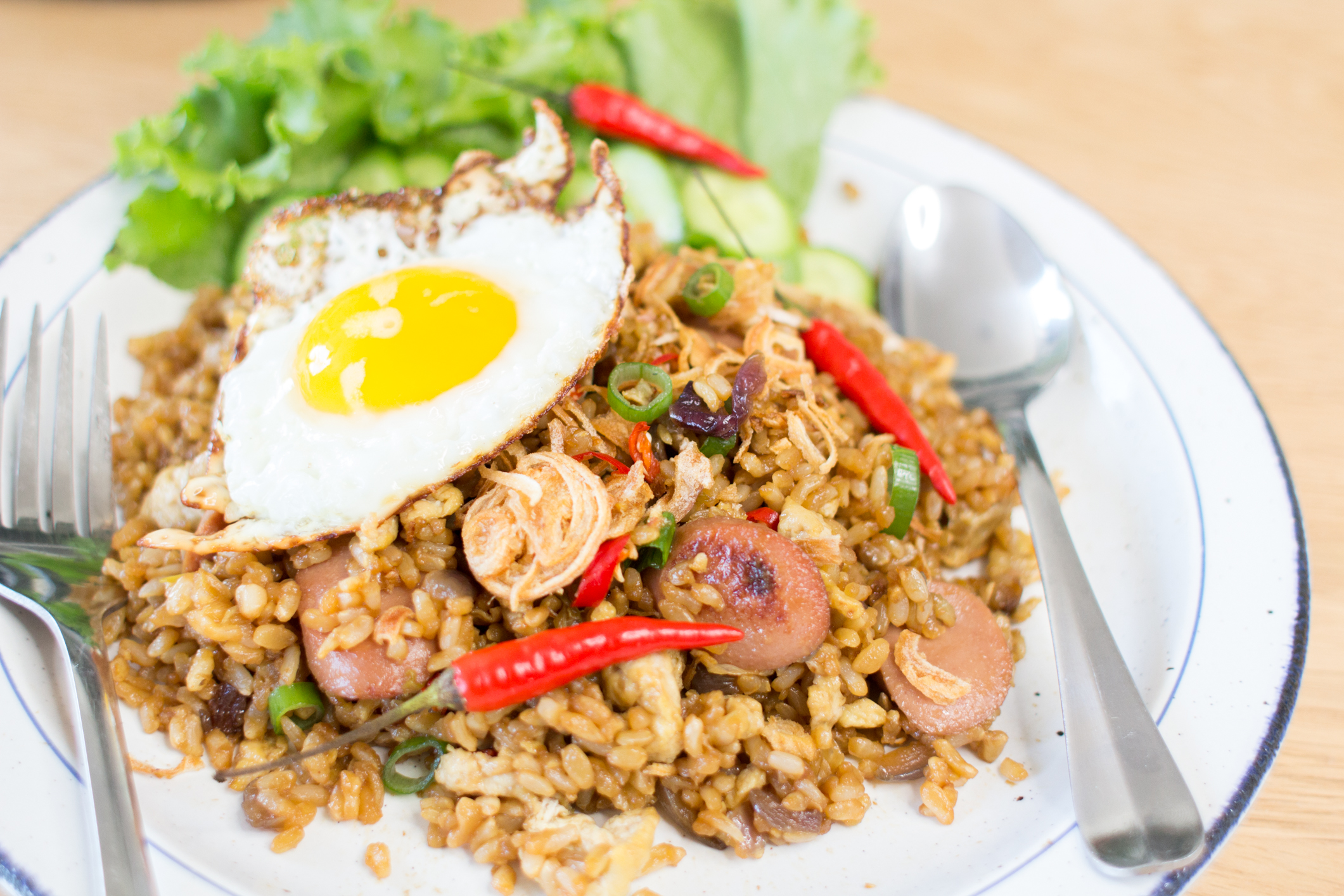
Nasi Goreng Tastes Kinda Sweet? Is that Right?
Most Indonesians enjoy a sweeter flavor profile, and our food tends to lean toward savory-sweet. This recipe shouldn’t be overly sweet but should be savory sweet. I suggest reducing the Kecap Manis by half and doubling the soy sauce amounts if you prefer a salter flavor.
Why Cucumbers with Fried Rice?
Unlike other fried rice, Nasi Goreng is not light on flavor. Traditionally, Indonesians always pair cucumbers with fried rice to refresh the palette and balance the heavy flavors.
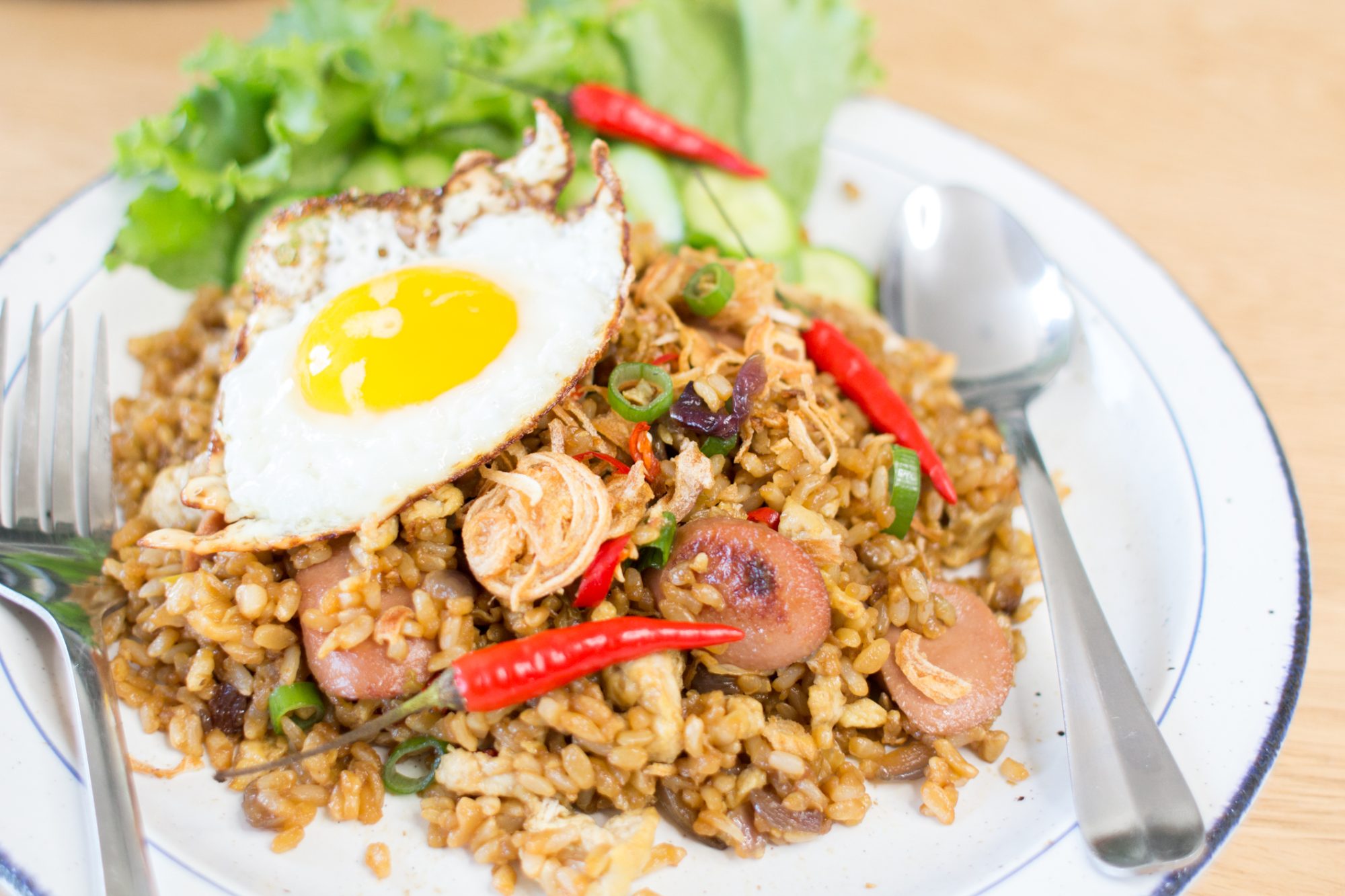
Crack eggs into a bowl, add soy sauce and whisk until well-mixed. Pour egg mixture into the frying pan. Break up the eggs by lightly stir-frying it. Cook until eggs are slightly browned on the outside. Remove eggs from the pan and set aside.

Dice red onions, Thai chili peppers and spring onions. Cut franks into coin slices.
In a medium frying pan, pour 2 tbsp of vegetable oil. Heat over medium-high heat. Place franks into the pan and stir-fry until lightly browned. Add red onions, Thai chili peppers and spring onions into the pan. Stir-fry until onions are fragrant and translucent.
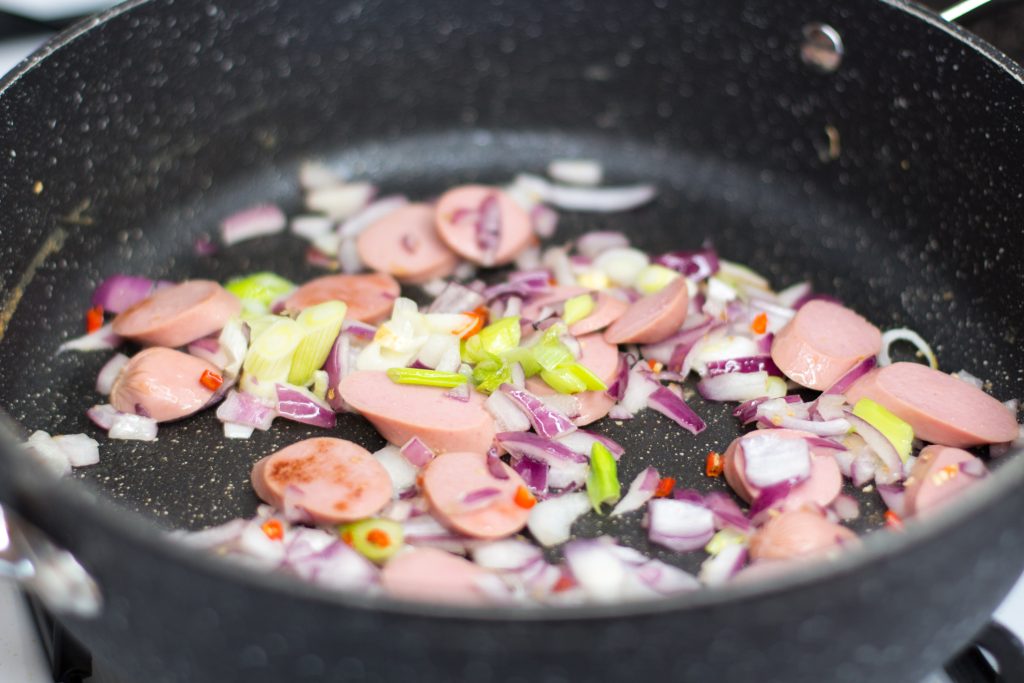
Place cooked white rice into the pan. Break any rice clump and add chicken powder. Stir fry for at least 7-9 minutes to lightly caramelize rice and spices to permeate.
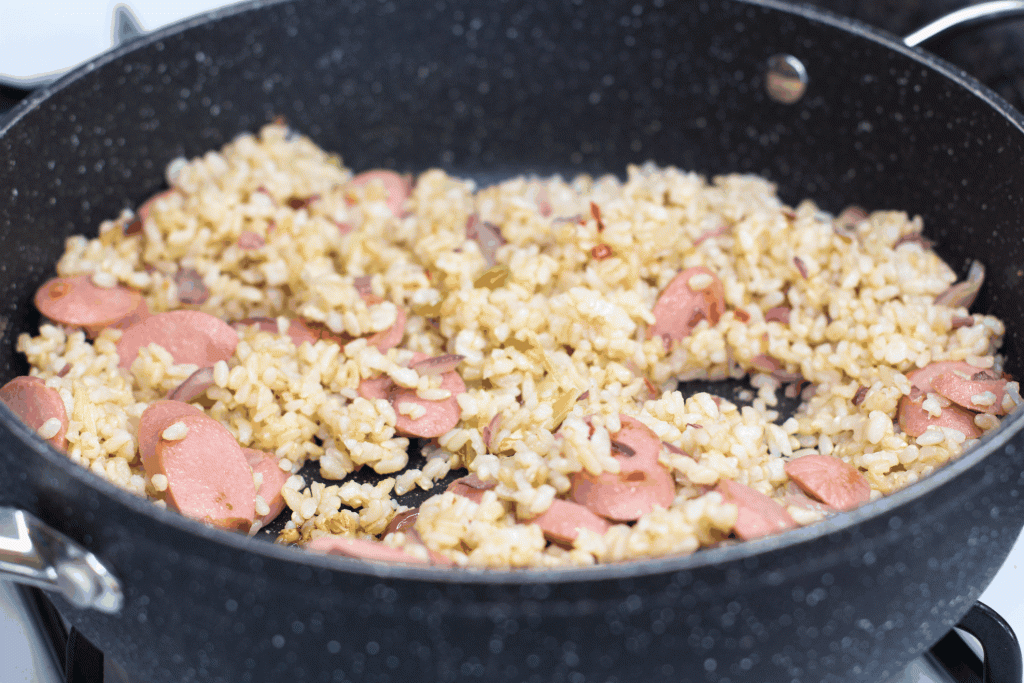
Add kecap manis and soy sauce, stir-fry until well-mixed.
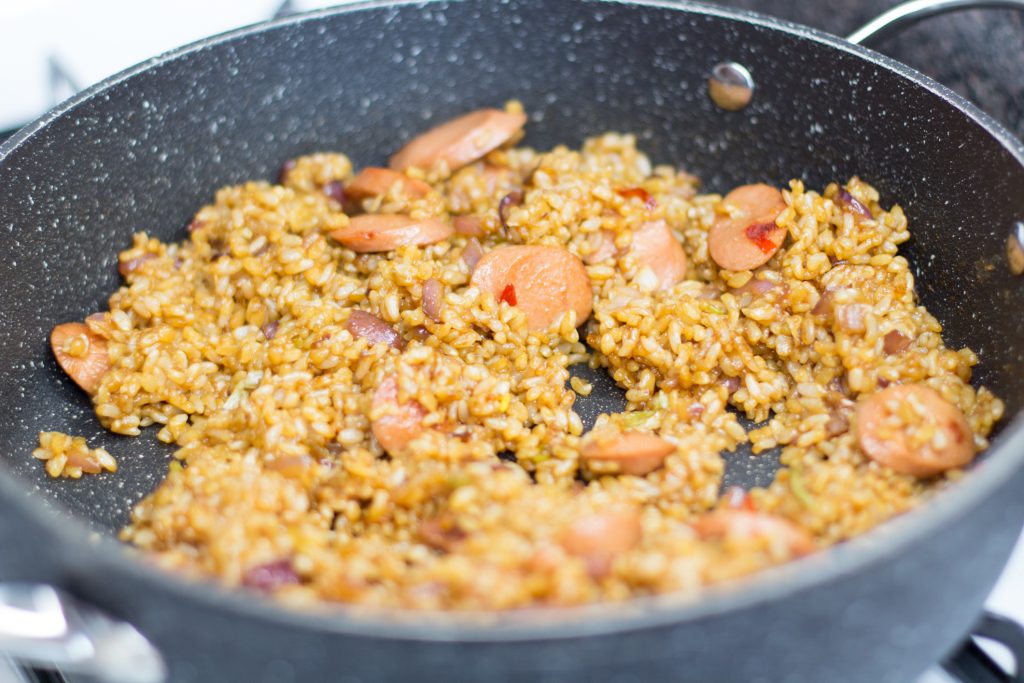
Transfer previously cooked eggs to fried rice and stir-fry well.

Serve fried rice on a plate with cucumbers and garnish with fried shallots (optional).
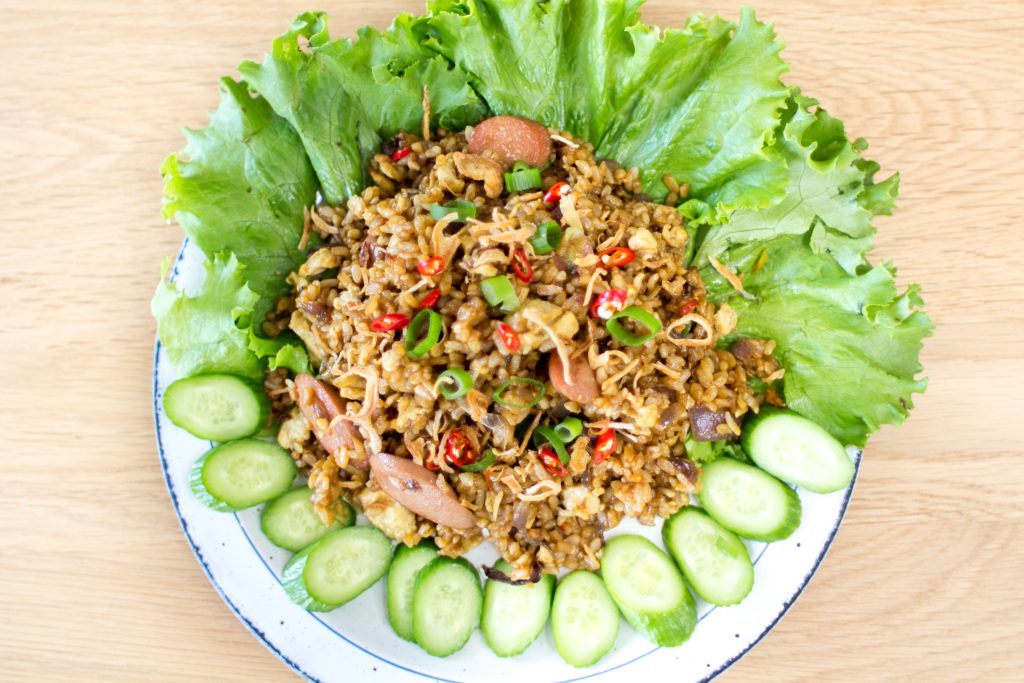
Ingredients
Directions
Crack eggs into a bowl, add soy sauce and whisk until well-mixed. Pour egg mixture into the frying pan. Break up the eggs by lightly stir-frying it. Cook until eggs are slightly browned on the outside. Remove eggs from the pan and set aside.

Dice red onions, Thai chili peppers and spring onions. Cut franks into coin slices.
In a medium frying pan, pour 2 tbsp of vegetable oil. Heat over medium-high heat. Place franks into the pan and stir-fry until lightly browned. Add red onions, Thai chili peppers and spring onions into the pan. Stir-fry until onions are fragrant and translucent.

Place cooked white rice into the pan. Break any rice clump and add chicken powder. Stir fry for at least 7-9 minutes to lightly caramelize rice and spices to permeate.

Add kecap manis and soy sauce, stir-fry until well-mixed.

Transfer previously cooked eggs to fried rice and stir-fry well.

Serve fried rice on a plate with cucumbers and garnish with fried shallots (optional).

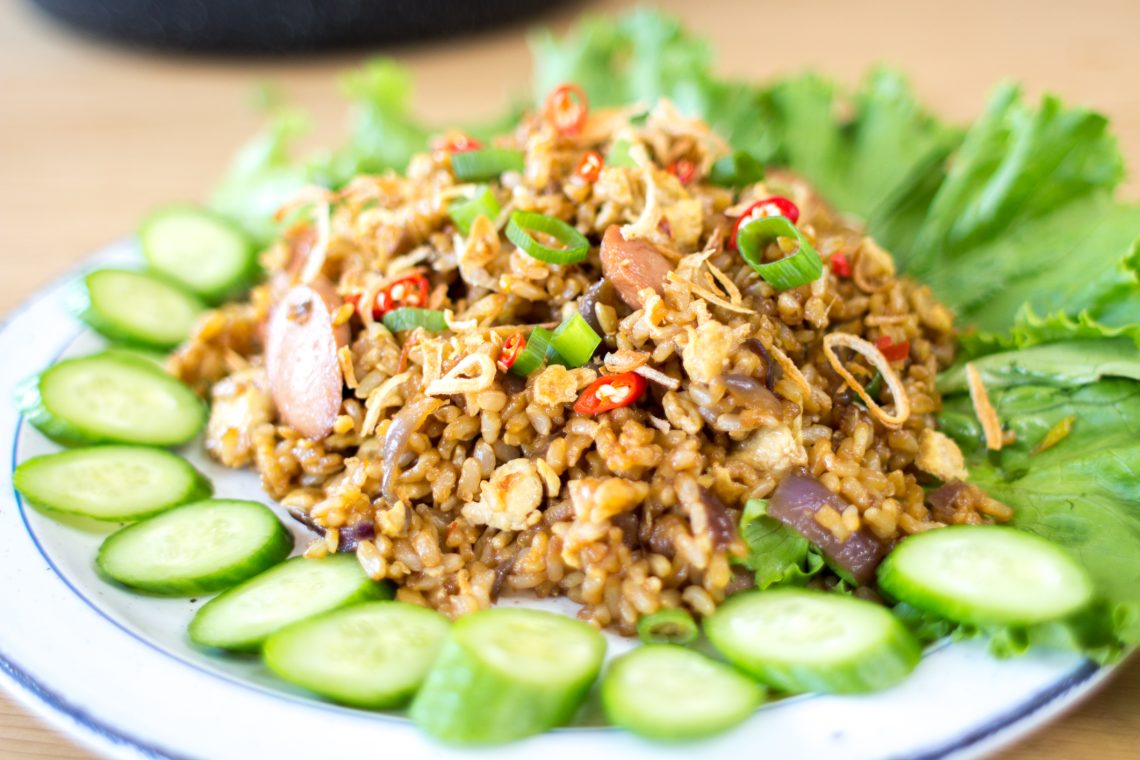


No Comments